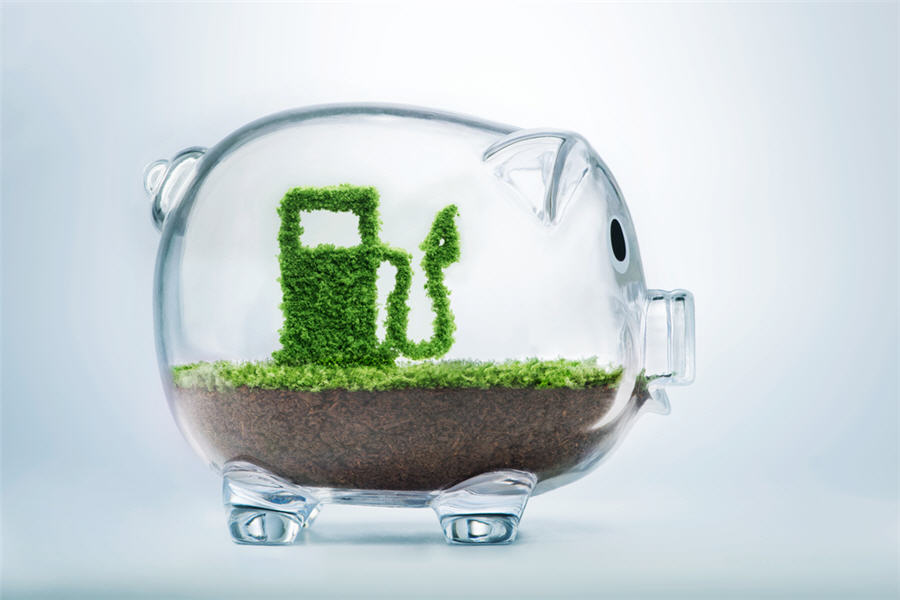For oil producers, green is the new black

For more than a century, oil and gas have been the world’s primary energy sources, fueling rapid economic development and improvements in living standards. Not surprisingly, the oil & gas sector has generated enormous economic value; it is among the largest sectors by both revenues and market size, with nearly $4 trillion in market capitalization in U.S. markets alone.
While fossil fuels are likely to meet the majority of energy needs for the foreseeable future, growing international concern over the potential impacts of human-induced climate change has raised questions about the sustainability of fossil energy. As a result, many of the largest oil & gas companies are diversifying their operations by investing in low-carbon energy assets such as solar and wind farms, battery storage companies, and carbon capture systems. For investors, the shift may shake up a historically stable source of portfolio returns.
Oil and gas companies have made forays into the renewable space before. Early on, many companies invested in biofuels production, an industry that has failed to take off. According to Bloomberg New Energy Finance, between 2005 and 2013, oil majors pumped some $9.4 billion into ethanol and other biofuels plants. Investments in wind and solar remained anemic during this time period due to weak economic fundamentals, as the subsidized costs of energy (measured as the levelized cost of energy (LCOE)* were simply too high.
Now, companies are finding a more compelling investment case. According to a recent report by the World Economic Forum, the global average LCOE of utility-scale photovoltaic power fell by an average of 20 percent annually between 2012 and 2017, and today is at parity with, or even below, the cost of conventional energy in many U.S. states, as well as parts of Europe and Asia. The International Renewable Energy Agency predicted that the LCOE of solar and onshore wind may drop an additional 59 and 26 percent, respectively, over the next decade.
A recent slew of deals showcases the oil and gas sector’s move into multiple areas of the renewable energy value chain.
In 2011, French oil company Total invested $1.38 billion for 60 percent of SunPower Corporation, the second largest solar panel producer in the U.S. In early 2016, Shell created its New Energies division devoted to investments in renewable and low-carbon energy. The program, seeded with $1.7 billion, will be funded with $200 million in annual capital. The company also recently won a contract to build a large 700 Megawatt wind farm in the North Sea, and is bidding on a proposed farm off the coast of North Carolina.
In 2016 Total purchased a battery company for $1.1 billion, adding energy storage to the company’s renewable portfolio. Meanwhile, Norway’s state oil company Statoil stated that it will increase investments in renewable energy to between 15 and 20 percent of total spending by 2030, a significant increase from the five percent spent today. Similarly, Danish DONG Energy exemplifies perhaps the most extensive transition from a traditional exploration and production model to a renewable energy provider. In 2001, renewable energy contributed less than 5% of earnings. By 2016, renewable energy’s contribution had grown to almost 50% of earnings and, incredibly, DONG announced that it would seek to divest its oil and gas holdings entirely.
Saudi Aramco, the massive Saudi Arabian state oil company, is considering investing as much as $5 billion in renewable energy companies in order to diversify from crude oil. The move is part of a larger plan; Saudi Arabia aims to produce up to 30 percent of its energy from renewable sources by 2030, with direct investments of $30 to $50 billion.
Interestingly, companies are also throwing their weight behind technologies that may allow fossil fuel use to continue, but without the harmful carbon emissions. For example, Exxon Mobil and FuelCell Energy are partnering to develop carbon-capture and storage systems for use in power plants burning fossil fuels. The technologies are designed for use on coal-fired plants and could be used on natural-gas turbines.
Companies further downstream are likewise taking interest in renewable energy. Canadian pipeline firm Enbridge energy invested heavily in acquiring stakes in offshore wind farms as it seeks to expand its renewable generation portfolio.
For investors in the oil and gas sector, the renewable investments are an encouraging sign that companies are seizing upon opportunities in a rapidly growing energy segment. Nonetheless, investors must consider the tradeoffs that company’s face between maintaining profitable oil production and capital investments in longer-term renewable energy sources. Diversifying away from oil and gas too quickly could leave money on the table, while ignoring a fundamental shift to clean energy could leave companies with billions in unburnable stranded assets. Properly understanding and acknowledging this shifting energy landscape is an essential task for both companies and investors in the oil and gas sector.
* The LCOE measures the total cost of the energy produced, including installation, financing, taxes, operations and maintenance, and quantity of electricity generated over the lifetime of the system.
More News
Asian coal prices fall to fresh four-year low on trade war fears
Chinese coal production hit an all-time high last month.
April 17, 2025 | 07:59 am
Alphamin cuts 2025 tin guidance amid Congo conflict disruptions
Operations resumed this week at the Bisie mine, which accounts for about 6% of global tin supply.
April 17, 2025 | 07:50 am
{{ commodity.name }}
{{ post.title }}
{{ post.date }}





Comments